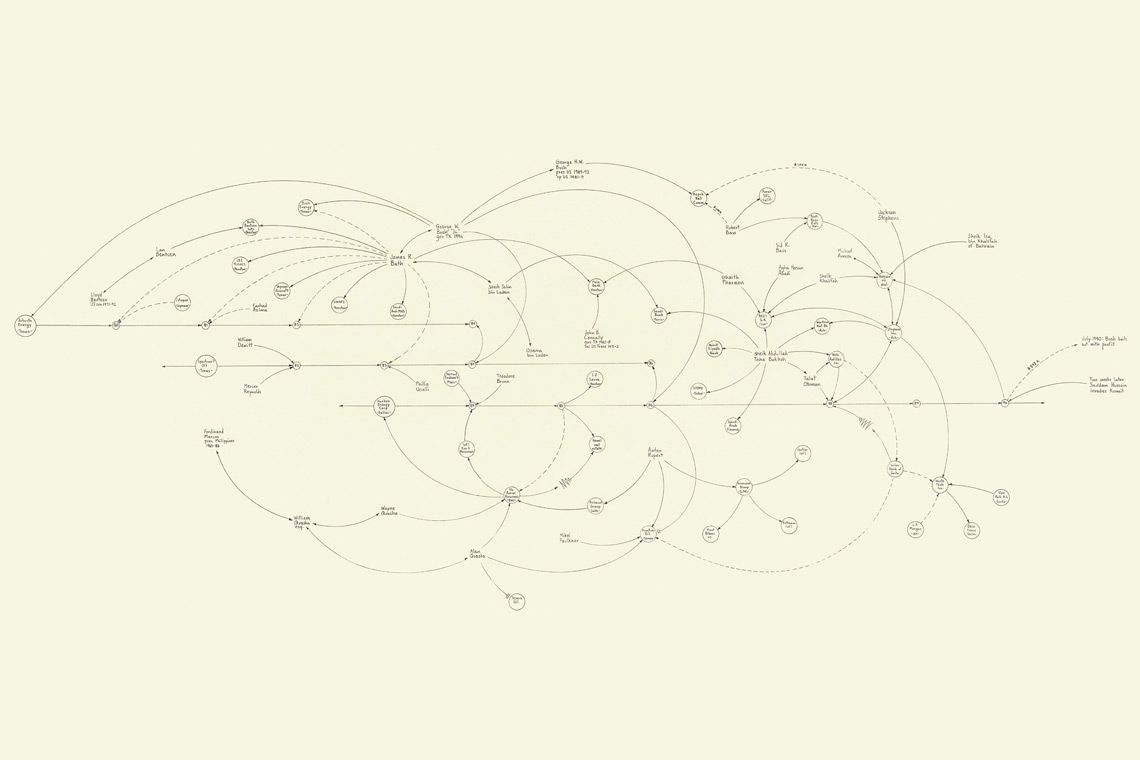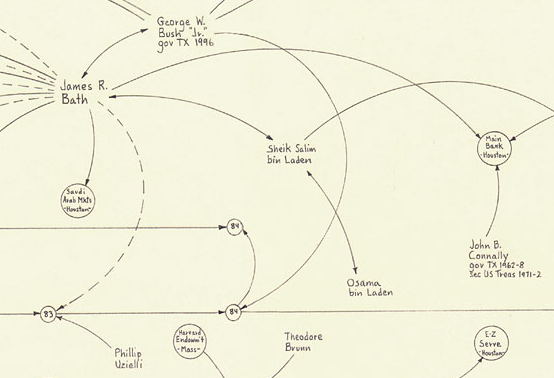George W. Bush, Harken Energy, and Jackson Stephens, c. 1979 – 91, 4th version, 1998
George W. Bush, Harken Energy, and Jackson Stephens, c. 1979-91 charts financial transactions and political collusions among the U.S. presidents Bush Junior and Senior, Osama Bin Laden’s family business, global banks and tycoons. After college George W. Bush founded the Texas oil company Arbusto Energy and in 1979 began to raise 4.7 million. The capitalization was brokered by his businessman acquaintance James R. Bath, who managed a portfolio worth millions of dollars for wealthy Saudis, including Sheikh Salem bin Laden, brother of Osama bin Laden and the oldest son of Mohammed bin Awad bin Laden, founder of the Saudi Binladin Group, one of the largest construction companies in Saudi Arabia. In 1980, Bath also invested in Arbusto through a Cayman Islands company called Cotopax, which was controlled by his client Sheikh Khalid bin Mahfouz, a powerful banker in Saudi Arabia who was later accused of funding Al Qaeda. Eventually, the Bush’s Arbusto oil venture failed and the company was merged with Spectrum 7 Energy Corp in 1984, which was subsequently acquired by Harken Energy in 1986 through a stock swap. Bush Junior joined Harken as a director and was given 212,000 shares of Harken stock. In 1988, Harken Energy Corp signed a lucrative contract with the government of Bahrain. The financial transaction, signed by both Jackson Stephens, an Arkansas tycoon, and Abdullah Taha Bakhsh, a Saudi real estate investor, was carried out through the Bank of Credit and Commerce International (BCCI), which was a large global bank involved in money laundering scandals for drug cartels, terrorist organizations, and international secret services. BCCI was largely controlled by Jackson Stephens and Sheikh Khalid bin Mahfouz.
George W. Bush, Harken Energy, and Jackson Stephens, c. 1979-91 investigates evidence of social, political, and economic transactions. Depicting evidence in the form of networks evokes the interconnection of information as a primary material of investigation. The linking, tagging, archiving, and cross-referencing of fragmented information is used as a creative practice to decode highly complex social and financial relationships. The resulting detailed and delicate geometrical drawings provide a nuanced understanding and immediate visualization of the complexity of global power structures.
Read Edges of Evidence: Mark Lombardi’s Drawings by Susette Min.
Graphite on paper. 18.5 × 43 in. 47 × 109.2 cm.
Courtesy of Robert Tolksdorf.

